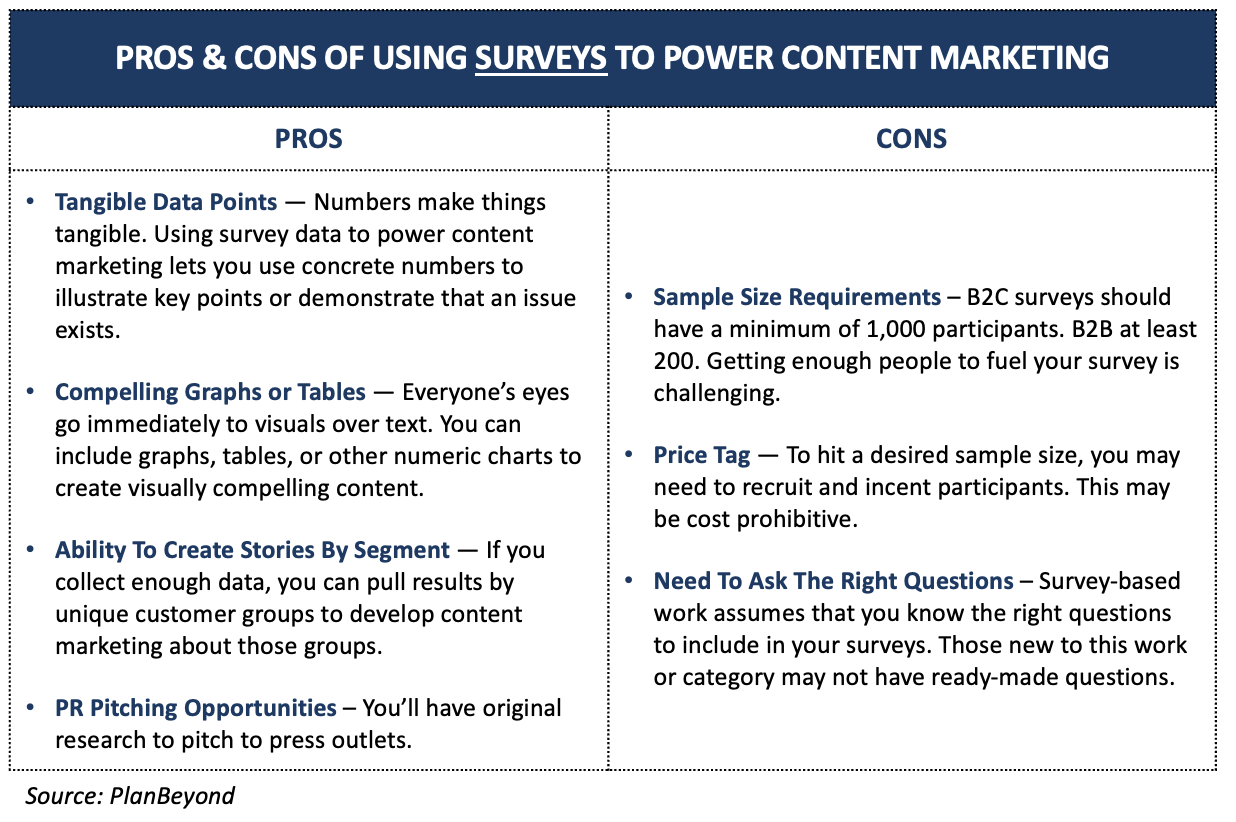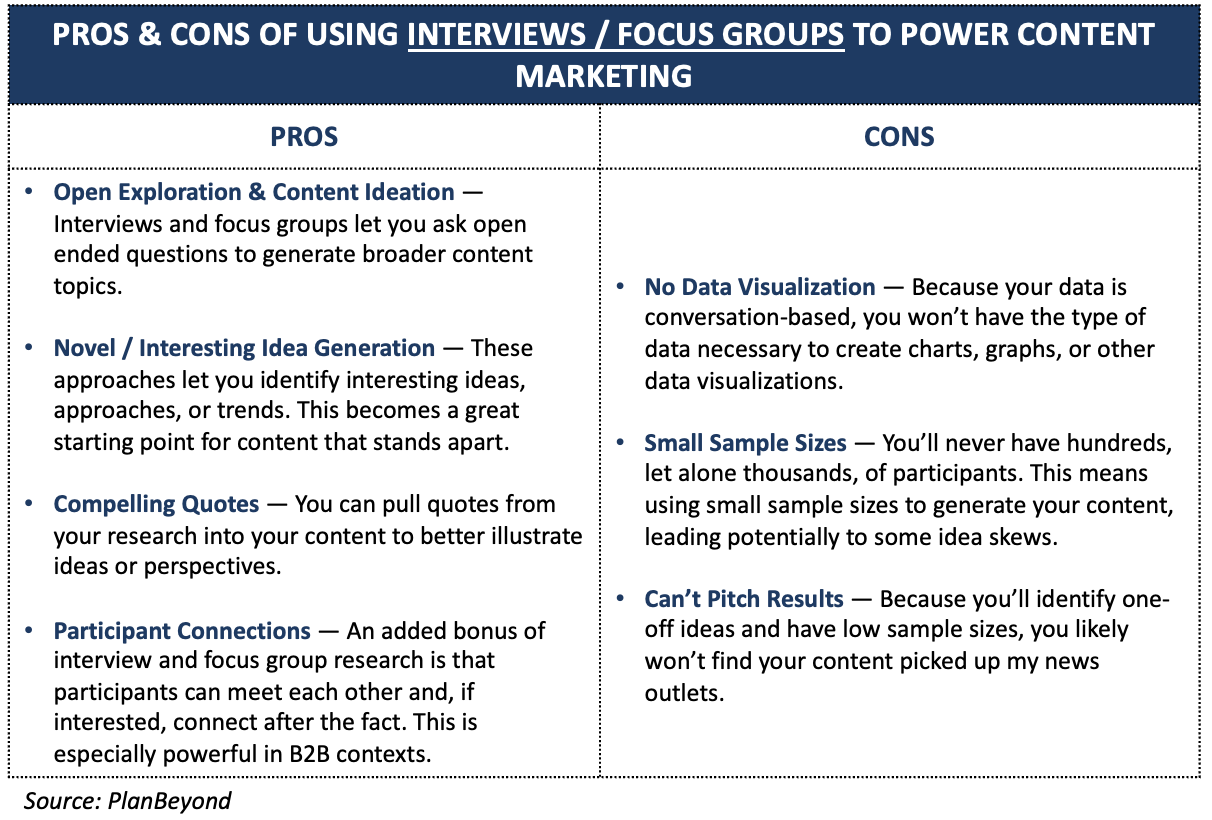Content marketing might seem all the rage. Just produce blog posts or eBooks and new customers will find you. Right? Well, not quite.
Your content marketing must actually be good! That means it must be informative and novel while (in our opinion) providing your audience something new or compelling that’s worth their time.
This is where using research to power your content marketing comes in. When you use impactful data to fuel your content engine, you produce content that isn’t just timely and relevant but also exudes authority and credibility too.
How Does Research Support Content Marketing
Using research findings to create content marketing lets you create unique, thought-provoking content while showing your audience that you base your perspectives on leading edge, current information.
This is key because content marketing is all about building credibility and trust with relevant prospective customers. It’s one thing to say, “we think X” or “we believe Y.” It’s another thing entirely to point to concrete quotes or metrics as a foundation.
When you use data to support your arguments, you are naturally more compelling. And, you’re providing your audience with novel information they can’t get elsewhere. Your business builds awareness, credibility, and, over time, new customers.
This is what good content marketing is all about!
How To Use Research To Produce Content
There are essentially two branches of research. On one side is quantitative research. This is research based on survey data, census data, or other large data sample sets. On the other side is qualitative research. With this, we’re talking about data collected via interviews, focus groups, or other observation-oriented activities.
Since the data in each method is so different, so is the type of content we can produce. Let’s look at how these two options compare.
Using Survey Data For Content Production
Survey data is quantitative. That is, it has numbers. As a result, survey-based content usually takes life via original reports with charts and graphs. This opens up a wide world of content opportunities.
For starters, you can have at least one original, data-rich report that you can pitch to various PR outlets. You build awareness and PR juice with the valuable inbound links to your site.
However, if your sample sizes are large enough, you can segment your data by unique respondent groups. This slicing and dicing lets you create additional reports with more nuanced findings.
Of course, we would be remiss if we didn’t mention some inherent downsides of survey-based content. To begin with, you need ample sample sizes to create compelling content. This may be cost prohibitive or just not possible with niche audiences. Additionally, it assumes you know what questions to ask. If you’ve been in your space for a while, this isn’t a problem. But, if you’re in a new category or focusing on a new customer group, your newness may lead to asking the wrong types of questions.

Using Interview Or Focus Group Research For Content Production

On the other end of things we have content based on focus groups or interviews. This type of research is qualitative which means it’s based on language, conversations, and observations. As a result, this type of content takes life using rich quotes and stories.
With this type of “data,” you can develop interesting blog posts and eBooks with lively stories and vignettes. It also lets you sprinkle pull quotes or testimonials throughout your content. This more organic approach humanizes your stories and often makes them more compelling. It eschews black-and-white data in favor of nuanced ideas.
In all, this leads people to be more likely to look forward to your content, subscribe to your email marketing, and actually engage and share your stories.
Alas, this type of content does also come with downsides. The lack of hard data makes it less pitch-able to PR outlets. It also means less opportunities for data visualizations via charts and graphs. Lastly, you are inherently working with small samples sizes. As a result, you may gather compelling findings…but they may not be relevant for the entire audience.
Choosing The Right Type Of Content
Let’s say you’re fully bought in to using research to power your content marketing. Now that you know there are two ways to do that, you have to choose which route to take. We like to use the following rules of thumb.
Opt for survey based content if you want to…
- Earn PR hits in magazines, newspapers, and other reputable publications
- Boost SEO quickly by building your inbound link profile from press hits
- Create charts, graphs, or other data visualizations
Opt for focus group / interview based content if you want to…
- Bring a human element to your content
- Boost SEO via a slow-and-steady link build up
- Isolate unique, nuanced ideas new to the market
Work with your team in advance to determine the business goals you have for your content. Once you isolate your goals, back into the approach that best lets you meet them.






